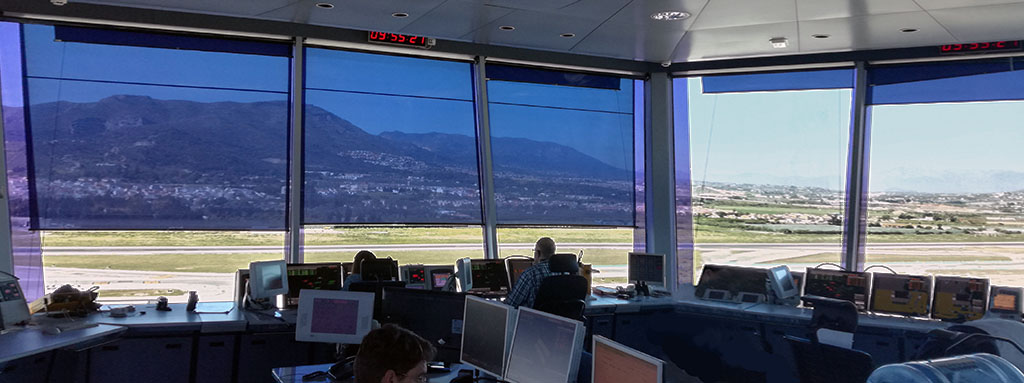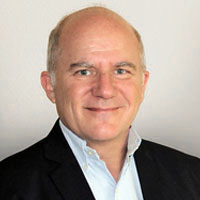When we travel by plane, we can be totally unaware of the sheer amount of technical and human resources that are put in place to ensure that our flight is efficient, comfortable and safe. The professionals who are usually closest to passengers are the pilot and the cabin crew, who undeniably have leading roles, but there are many other people who intervene directly in the development of a flight, and who are less well known. Among these are air traffic controllers.
An aircraft is monitored at all stages of its flight by an air traffic controller, who ensures that everything runs smoothly.
Their task is to maintain the flow of aircraft so that it is as safe, fast and orderly as possible, while complying with the standards and recommendations set by the International Civil Aviation Organization (ICAO) and the Federal Aviation Administration (FAA) or the aviation authorities in each country.
Every controller is responsible for tracking one or more aircraft operating in a three-dimensional space in the air, which is their area of responsibility. A controller “receives” a flight from a colleague, follows it along its route within their area of responsibility, and finally “delivers” it to the next controller (in an adjacent area). The main tool used by these professionals is radar, in its different formats and levels of complexity, which locates and identifies each aircraft in the airspace.
Throughout a whole flight, there are different types of controllers that intervene at different points. Each one attends to a different phase of the aircraft’s operation.
When the aircraft is still on the ground, there are professionals who are in charge of giving the authorisations to the flight plans of outgoing aircraft; these are the clearance delivery controllers (CLD). In the absence of this approval, the aircraft must remain stationary in its parking stand at the airport.
The ground controller (GND) is responsible for guiding the aircraft from the moment it starts until the moment it gets to the waiting area prior to take-off. Or, conversely, once landed, from the moment it leaves the runway until it reaches its parking stand and shuts off the engines. One of the tasks of the GND is to be aware of and inform the pilot about any incidents that occur on the surface, as well as auxiliary vehicle traffic. Remember that in any airport, especially larger ones, there is a continuous flow of vehicles dedicated to passengers (buses), crew, luggage, catering, fuel, cleaning, security, emergencies, control, guidance and maintenance.
Once the plane has reached the start of the runway, it has to wait until it is authorised to begin the take-off manoeuvre. This is done by the tower controller (TWR), who controls the visual flight rules in the airport environment. No aircraft may initiate either take-off or landing manoeuvres without their permission. Their tasks also include providing pilots with updated information on the weather, work or incidents in the runway environment, or any other parameter that may affect the operation.
When the aircraft has lifted into flight or, in the case of an arrival, until just before landing, the aircraft is under the responsibility of the approach controller (APP). Their role is key to linking the aircraft’s route to/from the airport runways from/to the airways or air routes.
The departure of an aircraft and its incorporation into an airway is not complicated. In all airports there are prefixed routes, so that aircraft can arrive quickly at any of the surrounding airways. These routes are reflected in the Standard Instrument Departure (SID) charts. The role of the APP ends as soon as the aircraft joins its route, with control of the aircraft being handed over to the next controller, as we will see later.
The process of approaching the airport is much more complex. The references for going from the different airways to the landing are the Standard Terminal Arrival Route (STAR) charts. This process is especially delicate for the approach controller, as it consists of taking the planes from the different airways and incorporating them into a single, ordered row before landing. Planes coming from different routes must converge into this one line before landing on the same runway. The additional difficulty lies in the fact that each aircraft has a different speed and size, which must be taken into account in order for them not to disrupt each other throughout the process of approaching the runway. For example, in terms of their speed, it is clear that a slow plane cannot be placed in front of a fast plane, as the latter would catch it up. With regard to the size (and consequent mass) of each aircraft, it is necessary to take into account the generation of turbulence at the rear of the aircraft. This is especially true when it comes to larger aircraft. You have to establish a safety distance between them, so that the next aircraft is not affected. Sometimes that separation has to be of many minutes.
The area where all this hustle and bustle occurs is called the CTR (Controlled Traffic Region). These spaces are associated with aerodromes, and their purpose is to protect IFR (instrumental flight) departures and arrivals. A CTR may include one or several nearby airports. Its lateral limits usually extend five nautical miles from the centre of the aerodrome.
Finally, we have the route or area controller (ACC), who is responsible for controlling the rest of the airspace, taking charge of the traffic established at each flight level. In general, the control areas are distributed and organised independently within each country, and are subject to common regulations. The procedures for transferring control of aircraft between adjacent areas that are in different countries are fully defined by international and/or bilateral agreements.
An aircraft in flight is monitored at all times by a controller, who is informed by the aircraft transponder of its identifier, speed, course, altitude, position, registration, flight number and company. It is hard to get lost.
As we said at the beginning, there are many professionals who intervene directly and indirectly to ensure our flight runs as smoothly as possible. Among them, the controllers play a fundamental role. Happy flying!



